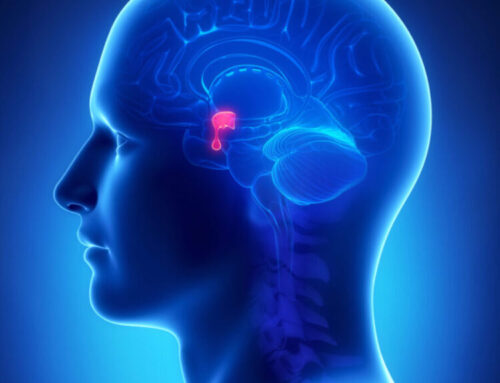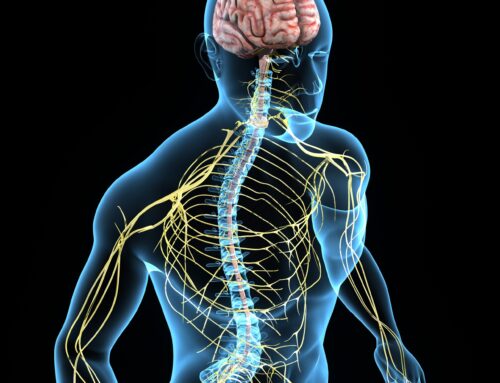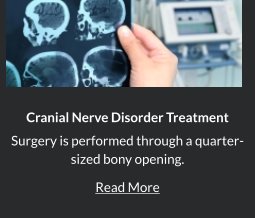Hemifacial spasm is a neurological condition characterized by involuntary contractions of the muscles on one side of the face. While not life-threatening, this condition can significantly affect the quality of life for those affected. It often arises from facial nerve irritation, usually due to vascular compression from nearby blood vessels. At the forefront of addressing this debilitating issue is microvascular decompression (MVD), a surgical intervention that has shown promising results in alleviating the symptoms of hemifacial spasm.
Understanding Hemifacial Spasm
Hemifacial spasm typically manifests as a series of involuntary facial twitches, which may begin around the eye and gradually spread to involve the entire side of the face. For many individuals, this can lead to significant distress, social anxiety, and challenges in daily functioning. The spasms can be triggered by stress, fatigue, or even bright lights, making the condition all the more challenging to manage.
The underlying cause of hemifacial spasm usually involves compression of the facial nerve (cranial nerve VII) by adjacent blood vessels, such as the anterior inferior cerebellar artery or the vertebral artery. This compression creates irritation leading to characteristic muscle spasms. While some patients may find temporary relief through non-surgical treatments such as botulinum toxin injections, these approaches often require repeated sessions and do not address the root cause of the problem.
The Role of Microvascular Decompression
Microvascular decompression is a highly specialized surgical procedure designed to relieve pressure on the facial nerve. This surgical intervention is particularly beneficial for patients who have not experienced satisfactory improvement with conservative treatments or those who wish to eliminate the symptoms entirely. Dr. Robert Louis, a well-regarded neurosurgeon in Orange County, California, specializes in this intricate procedure.
The Surgical Procedure
The microvascular decompression procedure begins with the patient being placed under general anesthesia. A small incision is made behind the ear to allow access to the skull. The surgeon then carefully removes a portion of the bone to expose the cranial cavity and locate the facial nerve. Once identified, the surgeon meticulously dissects the surrounding tissues to identify any blood vessels that may be compressing the nerve.
Using a technique that requires exceptional precision, the surgeon gently moves the offending blood vessels away from the facial nerve. To provide long-term relief, a small sponge or Teflon material is often placed between the nerve and the blood vessels to prevent future contact. This delicate manipulation of the vascular structures can lead to a remarkable reduction or complete resolution of hemifacial spasm symptoms.
Recovery and Outcomes
Patients typically spend a few days in the hospital following the procedure for observation and recovery. Most individuals can expect to return to their normal activities within a few weeks, although the full benefits of the surgery may take some time to manifest as the nerve heals. The success rate for microvascular decompression is notably high, with many patients reporting substantial relief from their symptoms.
Besides the physical relief, the psychological benefits of alleviating hemifacial spasm can be profound. Patients often report improvements in social interactions, self-esteem, and overall quality of life. Dr. Louis emphasizes the importance of a patient-centered approach, tailoring the treatment plan to the unique needs of each individual seeking care.
Who Is a Candidate for Microvascular Decompression?
Not every hemifacial spasm patient will require surgery. The decision to proceed with microvascular decompression is typically based on several factors:
- Severity of Symptoms: Patients experiencing significant and debilitating symptoms that interfere with daily activities may be considered for surgery.
- Response to Conservative Treatments: If non-surgical options, such as botulinum toxin injections, have failed to provide adequate relief, surgery may be the next step.
- Overall Health: A thorough evaluation of the patient’s overall health and medical history is essential in determining candidacy for surgery. Dr. Louis and his team conduct comprehensive assessments to ensure that patients are well-informed and prepared for the surgical journey.
- Patient Preference: For many, the desire to eliminate the spasms altogether can be a motivating factor in choosing surgical treatment.
Potential Risks and Considerations
Like any surgical procedure, microvascular decompression carries certain risks. Although the overall risk of serious complications is low, patients should be aware of the potential for:
- Infection at the surgical site
- Bleeding
- Facial nerve injury, which could lead to temporary or permanent weakness
- CSF leakage or other neurological complications
Dr. Louis takes the time to discuss these risks thoroughly with patients, ensuring they have realistic expectations regarding the procedure and its outcomes. The benefits of microvascular decompression, particularly for those whose quality of life has been significantly impaired, often outweigh these risks.
The Importance of a Multidisciplinary Approach
At the Brain & Spine Center, the hemifacial spasm treatment goes beyond just the surgical intervention. A multidisciplinary approach ensures that patients receive comprehensive care throughout their treatment journey. This may include:
- Neurological Evaluation: Detailed assessments by neurologists to confirm the diagnosis and rule out other potential causes of facial spasms.
- Psychological Support: Counseling and support services are available to help patients cope with the emotional impact of their condition.
- Rehabilitation Services: After surgery, patients may benefit from physical therapy to regain strength and function.
This holistic approach is vital for helping patients achieve optimal results and improving their overall well-being.
Innovations in Neurosurgery
Dr. Robert Louis is at the forefront of utilizing innovative techniques and technologies in neurosurgery. The advancement of minimally invasive surgical techniques and the use of intraoperative imaging systems have transformed how microvascular decompression is performed. These innovations not only enhance the precision of the procedure but also contribute to shorter recovery times and improved patient outcomes.
By integrating cutting-edge technology into practice, Dr. Louis strives to ensure his patients receive the highest standard of care. The commitment to ongoing education and collaboration with other specialists further enriches the treatment landscape for individuals suffering from hemifacial spasm.
An Ongoing Commitment to Patient Care
Dr. Louis and his team are dedicated to providing ongoing support to patients even after their surgical journey. Regular follow-up appointments allow for monitoring recovery and addressing any concerns that may arise. This continued care is essential for ensuring lasting success and maintaining the gains achieved through surgery.
Additionally, the Brain & Spine Center remains committed to educating patients about their conditions and treatment options. By fostering an environment of open communication and shared decision-making, patients feel empowered to take an active role in their healthcare journey.
The Future of Hemifacial Spasm Treatment
As research continues to evolve, so does the understanding of hemifacial spasm and its underlying mechanisms. Ongoing studies are exploring new therapeutic approaches, surgical techniques, and technological advancements, all aimed at improving patient outcomes. Moreover, the integration of telemedicine has provided a platform for patients to access consultations and follow-up care from the comfort of their homes. This innovative approach enhances accessibility and convenience, particularly for those living in remote areas.
Dr. Louis remains optimistic about the future of hemifacial spasm treatment, emphasizing the importance of continued research and collaboration within the medical community.
Through dedication to patient care, cutting-edge surgical techniques, and a commitment to advancing the field of neurosurgery, the Brain & Spine Center is poised to remain a leader in providing effective solutions for hemifacial spasms and other neurological conditions.
In summary, microvascular decompression represents a beacon of hope for individuals suffering from hemifacial spasm. By addressing the root cause of the issue, this surgical intervention offers the potential for lasting relief and improved quality of life. With the expertise of skilled neurosurgeons like Dr. Robert Louis, patients can embark on a transformative journey toward recovery, reclaiming their lives from the grips of this challenging condition.






















